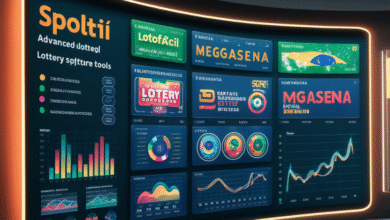Websote: Understanding the Term, Its Use Cases, and Digital Implications

In the fast-paced world of digital communication, terms often evolve through typographical errors, user behavior, and creative reimagination. Websote is one such term that has gained traction across search engines and social media. While many initially recognize it as a misspelling of “website,” the term websote has come to represent more than just a typo it’s now a concept tied to digital presence, branding, and even online satire.
What Is a Websote?
A websote is most commonly understood as a misspelled version of “website”, but its frequent appearance across forums, memes, and online discussions has given it a new layer of meaning. In digital slang, “websote” is used to describe:
-
A poorly designed or dysfunctional website
-
A satire or parody of a professional website
-
An intentional branding move to appear quirky or humorous
-
A placeholder for a future domain or unfinished project
Despite being a non-standard term, its persistent use has caused many to search for websote-related content, fueling keyword interest and digital curiosity.
Common Uses and Contexts of the Term “Websote”
1. Typographical Error Turned Keyword
It’s widely believed that “websote” originated from a common typing error, particularly among non-native English speakers or users on mobile devices. Over time, it began appearing in:
-
Social media bios: “Check out my websote!”
-
Blog posts: “I’m working on my personal websote.”
-
eCommerce platforms: “Visit our webste for more deals.”
Due to the organic repetition of the term, search engines began indexing it, increasing its visibility.
2. Internet Humor and Meme Culture
As with many internet-born phrases, websote found its place in meme culture. It is now used humorously to refer to:
-
Websites that are visually broken or unintentionally hilarious
-
Scam or phishing pages with questionable design
-
Fake sites shown in satire content or parody videos
These representations play on the phonetic similarity and visually awkward nature of the term, giving it viral potential.
3. Branding Strategy (Intentional Use)
Some businesses and influencers now intentionally use “websote” as a branding quirk to stand out or appeal to a younger, more informal audience. Examples include:
-
Blog domains using variations like
mywebsote.net -
Merchandise lines printing “websote developer” on apparel
-
TikTok creators promoting fake webstes for comedic effect
This strategy thrives on irony and relatability, making the brand appear approachable and modern.
Why the Term “Websote” Matters for SEO and Digital Presence
1. Search Behavior and Traffic Opportunities
As interest in the term “webste” increases, search volumes have begun to rise, particularly among:
-
Curious users wondering if it’s a new platform or concept
-
Developers looking to correct spelling in their code or content
-
Individuals intrigued by its cultural context
This creates a valuable long-tail keyword with low competition but increasing relevance. Targeting such terms allows content creators to:
-
Capture untapped organic traffic
-
Answer trending queries
-
Position their content for novelty searches
2. UX Lessons from the Websote Phenomenon
The popularity of websote also highlights important lessons for developers and designers:
-
Typos matter in branding and navigation.
-
Users may remember humorous or incorrect terms more easily.
-
Accessibility and language adaptation can influence traffic patterns.
How to Capitalize on Websote in Digital Marketing
A. Create Optimized Content Around the Keyword
To rank for websote, it’s crucial to include the term in:
-
Page titles and meta descriptions
-
H1 and H2 headings
-
Image alt text using creative or illustrative examples
-
Blog articles explaining its meaning or use
You might consider producing guides like:
-
“Top 10 Webstes That Will Make You Laugh”
-
“Is Websote a Real Word? A Deep Dive into Internet Linguistics”
-
“How Webste Became a Branding Power Move”
B. Use in Social Media Hashtags and Captions
Since the term has humorous value, using it in captions, tweets, or posts can increase engagement. Examples:
-
“Working on my new webste… coming 2026.”
-
“This websote gave me a virus and a laugh.”
-
“Tag a developer whose webste looks like this.”
These examples are relatable and often go viral due to shared industry frustrations.
C. Launch a Side Project or Domain Using “Websote”
Given its rising recognition, securing a domain like:
-
websote.fun -
mywebsote.com -
worstwebsoteever.net
…can become a marketing stunt or educational project.
Websote vs Website: Key Differences in Context
| Feature | Website | Websote |
|---|---|---|
| Definition | A structured collection of web pages accessible via a domain | A slang or typo for “website”; may imply poor design or parody |
| Usage Context | Formal, technical, professional | Informal, humorous, ironic |
| SEO Authority | High competition keywords | Low competition, emerging keyword |
| Branding Value | Stable, industry standard | Trend-driven, niche or meme-worthy |
| Digital Impact | Long-term business asset | Viral potential, short-term engagement |
The Future of Websote in Digital Culture
As the internet evolves, so too does the language we use to describe it. The term webste reflects:
-
The human side of technology, where humor and error become part of the conversation
-
The unpredictable nature of viral content, as a simple typo becomes a searchable term
-
The potential for brands to lean into informal trends to foster authenticity
More than just a misspelling, websote is now part of a growing internet vernacular.
Conclusion: From Error to Opportunity
Whether viewed as a typo, a meme, or a clever branding tactic, websote continues to gain attention across the digital landscape. It represents the intersection of language, culture, technology, and SEO offering unique opportunities for content creators, marketers, and developers.
By embracing the term and understanding its evolving context, businesses and individuals can turn a small error into a powerful tool for visibility, relatability, and growth.



